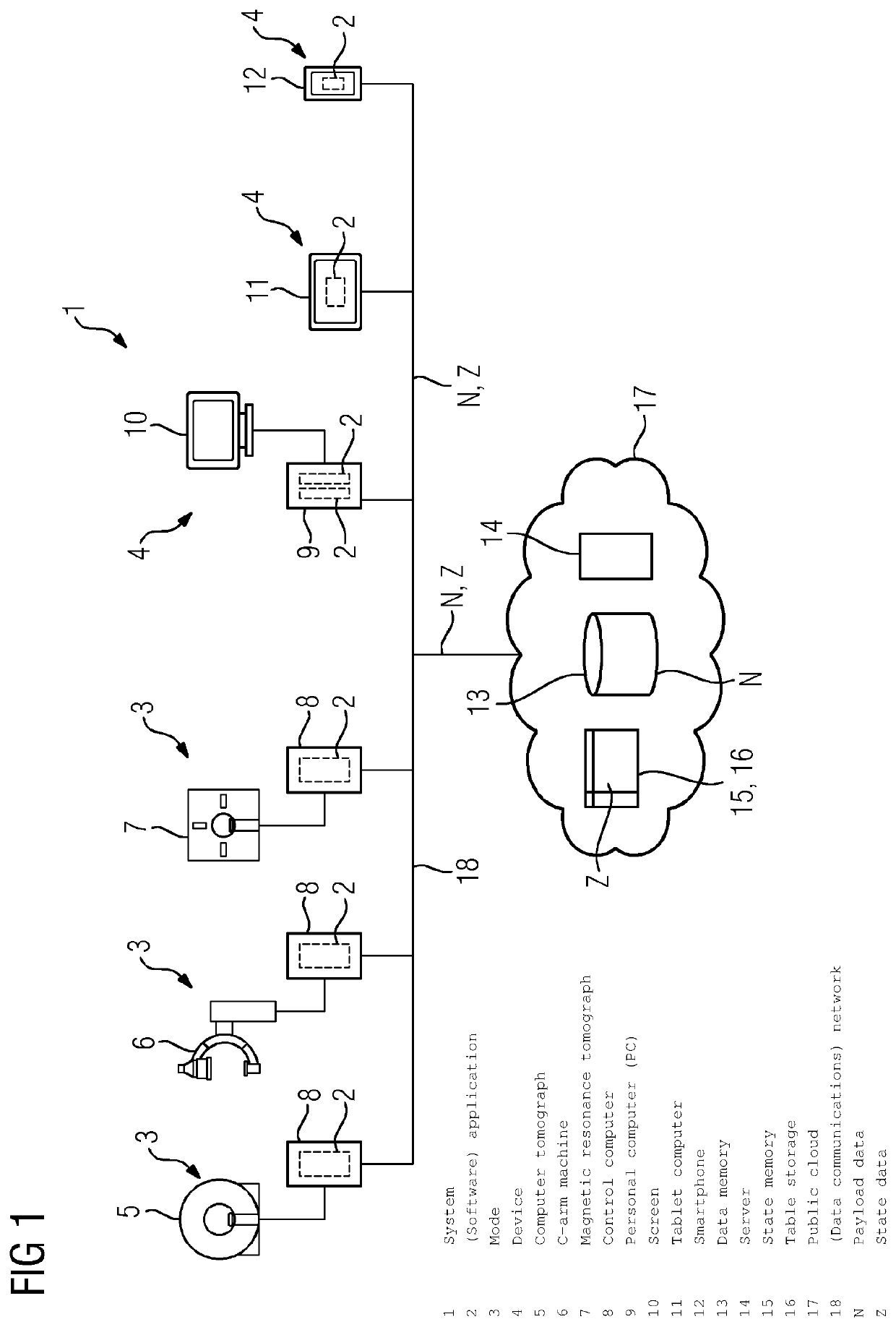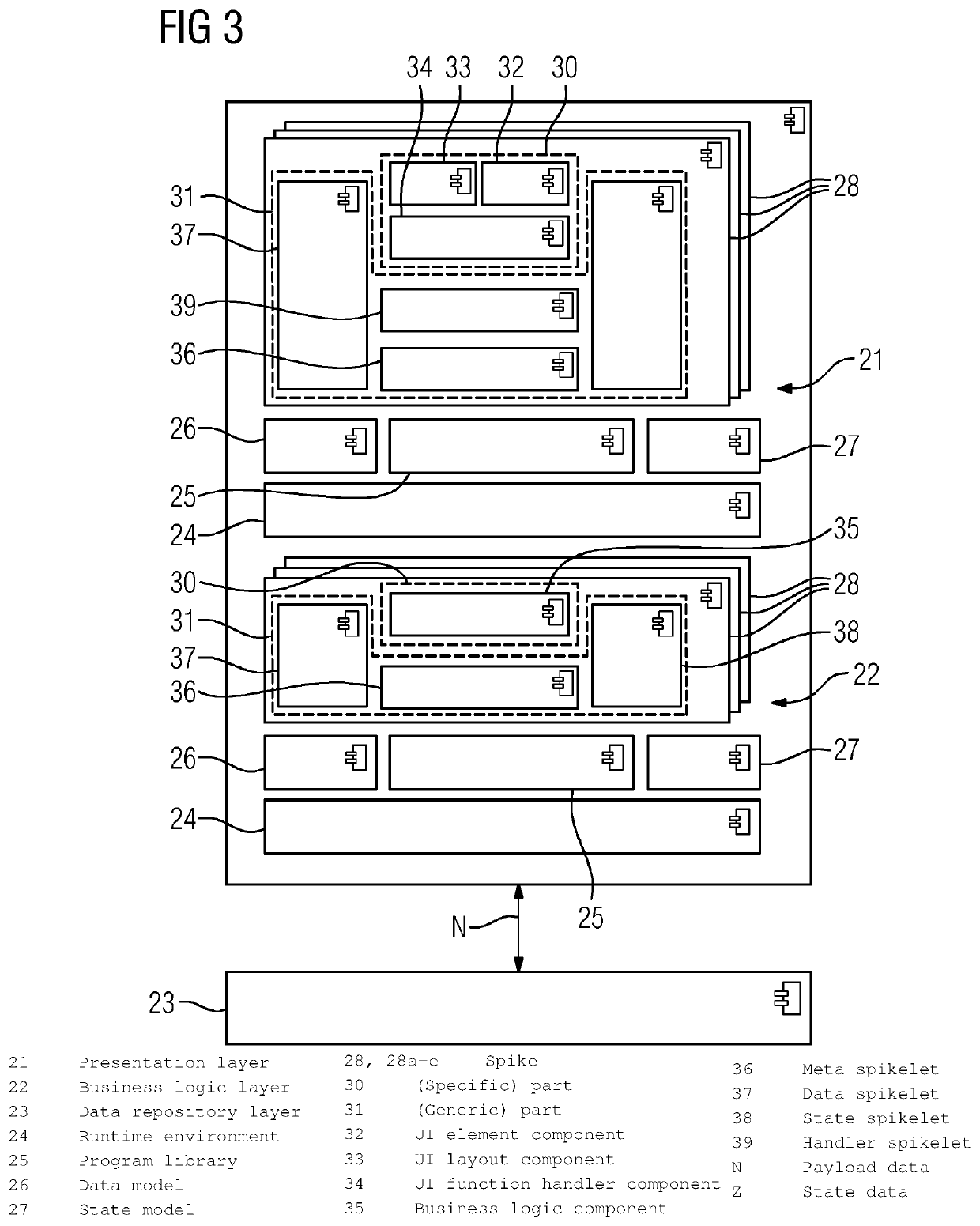Creating and operating software applications
a technology of operating software and operating system, applied in the direction of data processing applications, user interface execution, instruments, etc., can solve the problems of affecting the efficiency of work, the loss of working results, and the associated loss of efficiency of application or device of this typ
- Summary
- Abstract
- Description
- Claims
- Application Information
AI Technical Summary
Benefits of technology
Problems solved by technology
Method used
Image
Examples
Embodiment Construction
[0050]FIG. 1 depicts, in a rough schematic simplification, a system 1 for operating (e.g., software) applications 2, which are used for generating and processing medical data, on a plurality of devices. The devices of the system 1 on which the applications 2 are operated as intended include, on the one hand, medical imaging modes 3 for generating medical image data and also, on the other hand, user devices 4 for displaying and processing the image data and also other medical data.
[0051]A computer tomograph 5, a C-arm machine 6, and also a magnetic resonance tomograph 7 are represented by way of example in FIG. 1 as modes 3 of the system 1. In this regard, each of these modes 3 is allocated a control processor 8 on which at least one control software program is implemented as an application 2 for controlling an investigation undertaken by using the respective mode 3. Moreover, the control software allocated to the respective mode 3 includes, as a rule, functions for preparing and dis...
PUM
 Login to View More
Login to View More Abstract
Description
Claims
Application Information
 Login to View More
Login to View More - R&D
- Intellectual Property
- Life Sciences
- Materials
- Tech Scout
- Unparalleled Data Quality
- Higher Quality Content
- 60% Fewer Hallucinations
Browse by: Latest US Patents, China's latest patents, Technical Efficacy Thesaurus, Application Domain, Technology Topic, Popular Technical Reports.
© 2025 PatSnap. All rights reserved.Legal|Privacy policy|Modern Slavery Act Transparency Statement|Sitemap|About US| Contact US: help@patsnap.com



